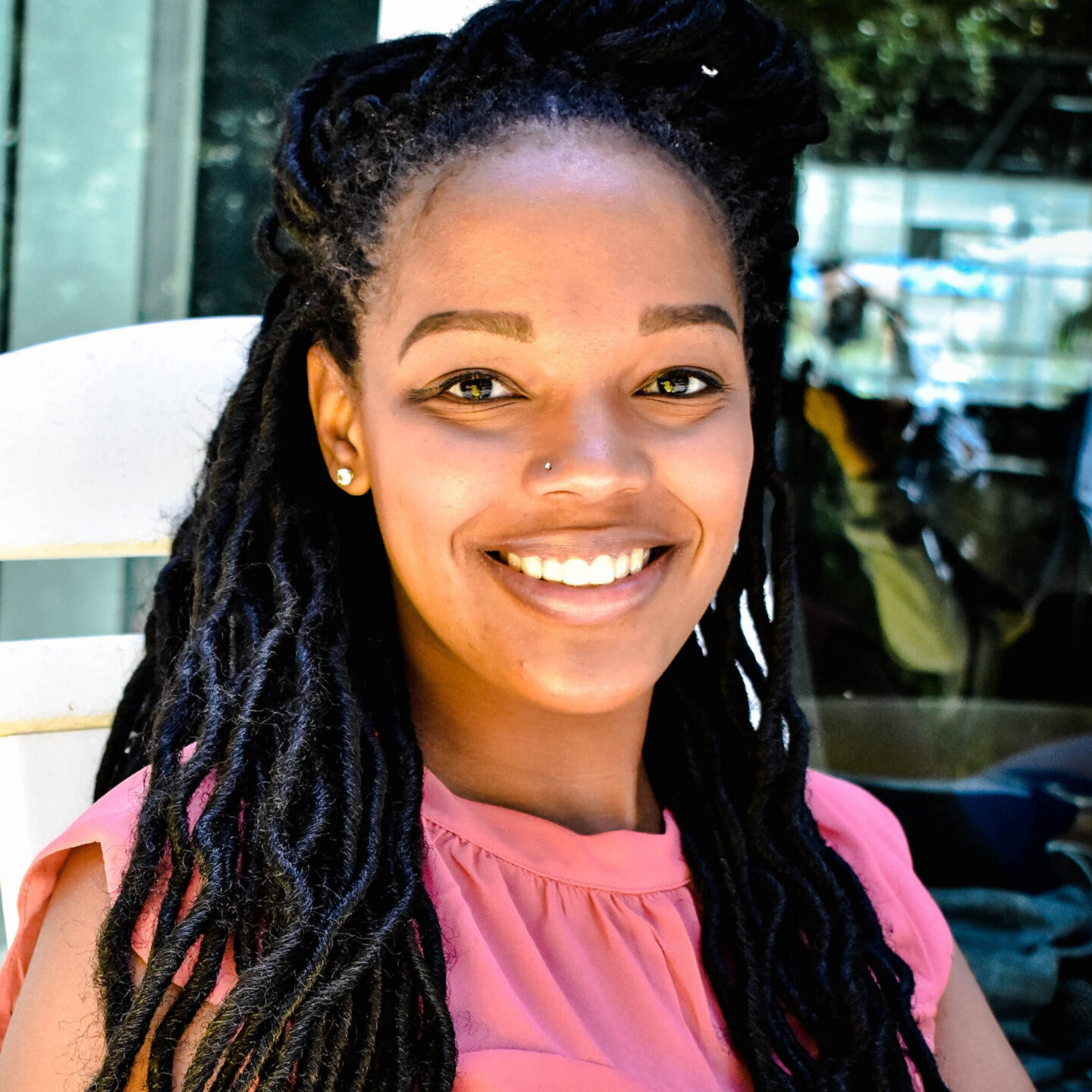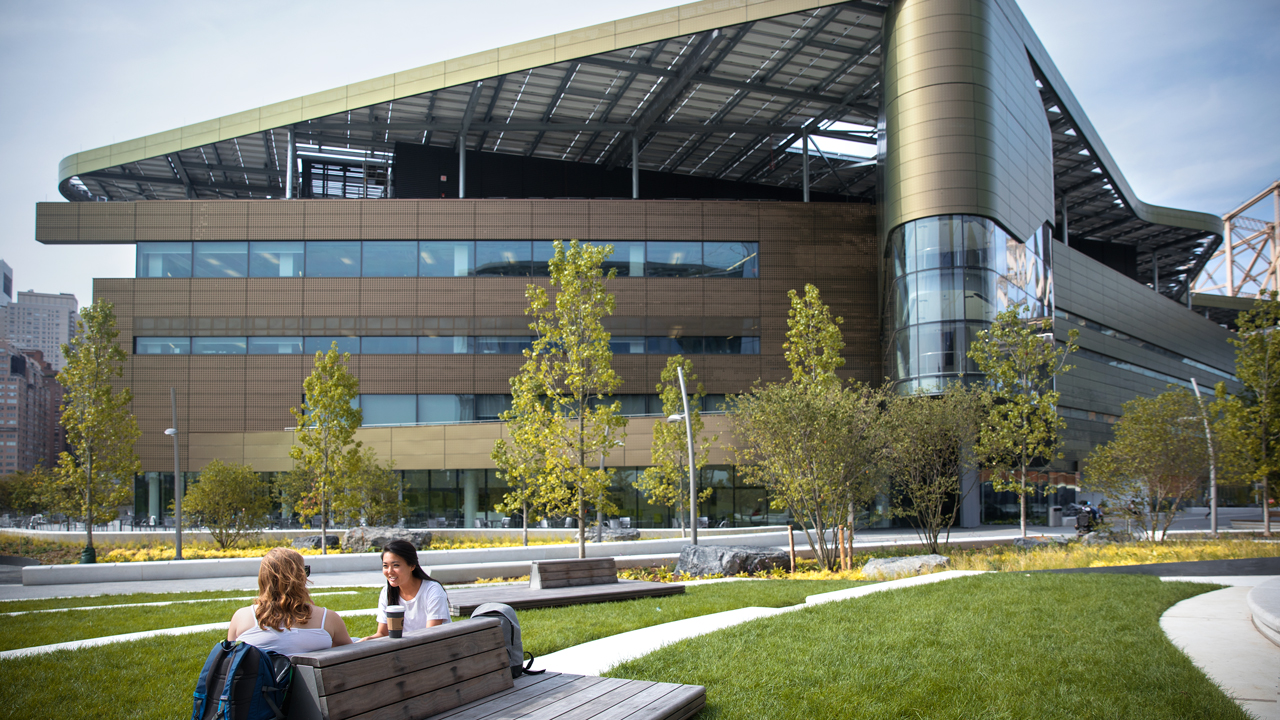
Look up at the Bloomberg Center facade and, over the multitude of tilted disks, part of Cornell Tech’s DNA unfolds. The facade is at the intersection of technology, art, and sustainability and it represents our commitment to our institutional roots in Ithaca and location in New York City.
Since Cornell Tech’s campus on Roosevelt Island opened in 2017 visitors often ask, “what do the circles on the Bloomberg Center mean?”
The so-called “circles” are actually three-dimensional disks cut from the metal panels that surround the second, third, and fourth floors of the building. Each disk tilts in a different direction. The eye-catching and unique design often evokes additional questions like, “do the circles move?”
In short, the answer is no, but there is a reason each circle is tilted the way it is.
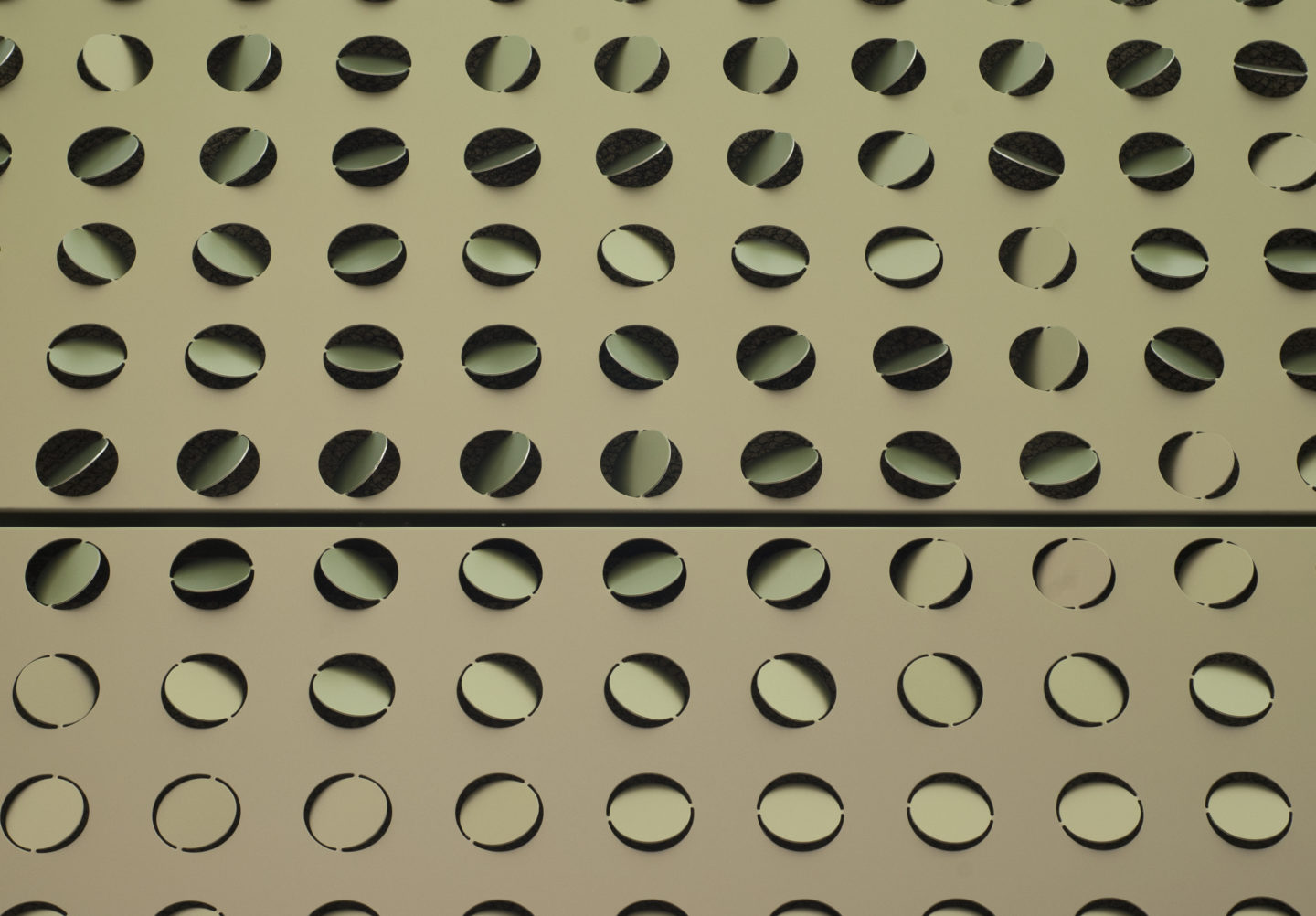
Like many of the design decisions made for the campus, the origins of the Emma and Georgina Bloomberg Center facade began with sustainability.
The Bloomberg Center aspires to net-zero energy consumption. In addition to the mounted solar panels on the building’s roof, the exterior walls needed to be designed in a way to help regulate and maintain its internal temperature. The building’s architecture firm, Morphosis, designed the exterior facade so that stainless steel panels would trap air between the exterior of the building and the elements to help regulate the internal building temperature. The question then became which pattern might make the panels more interesting. After some trial and error, the answer came from research in computer vision and image statistics, an area in which Dean Dan Huttenlocher and several other faculty members have expertise.
To illustrate the connection between the Cornell University campus in Ithaca and the new campus in New York City, Morphosis chose an image of a waterfall in Ithaca as inspiration for the eastern side of the building and the Manhattan skyline across the East River from campus for the western side of the building.
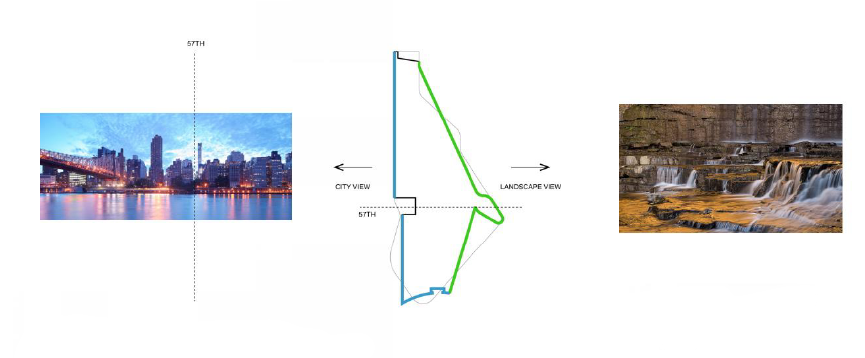
Then, drawing on the resident expertise in computer vision, the team used an algorithm to collect spatially varying statistics by shifting the image horizontally and vertically over a small range and computing the average of all those images. Anything that persisted over that region would show in the image average and minor differences would not.
Images of an urban skyline, show many vertical and horizontal lines and repeated elements (like the lines of a building and windows). The resulting average of the image evokes a busy, slightly chaotic feeling, much like the city.
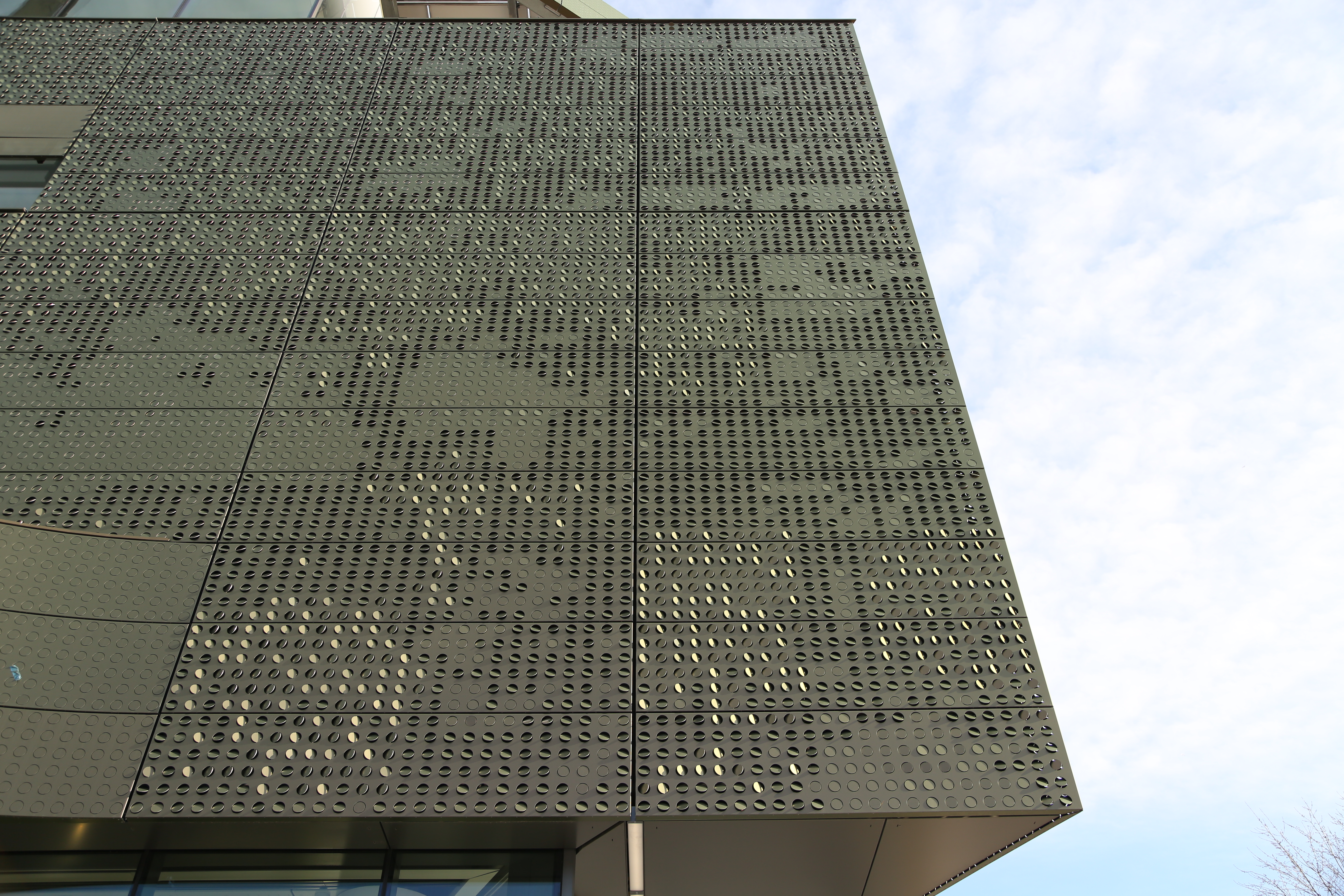
An image of a rural or natural landscape contains elements with many different orientations. This results in a more fluid and smooth-looking design.
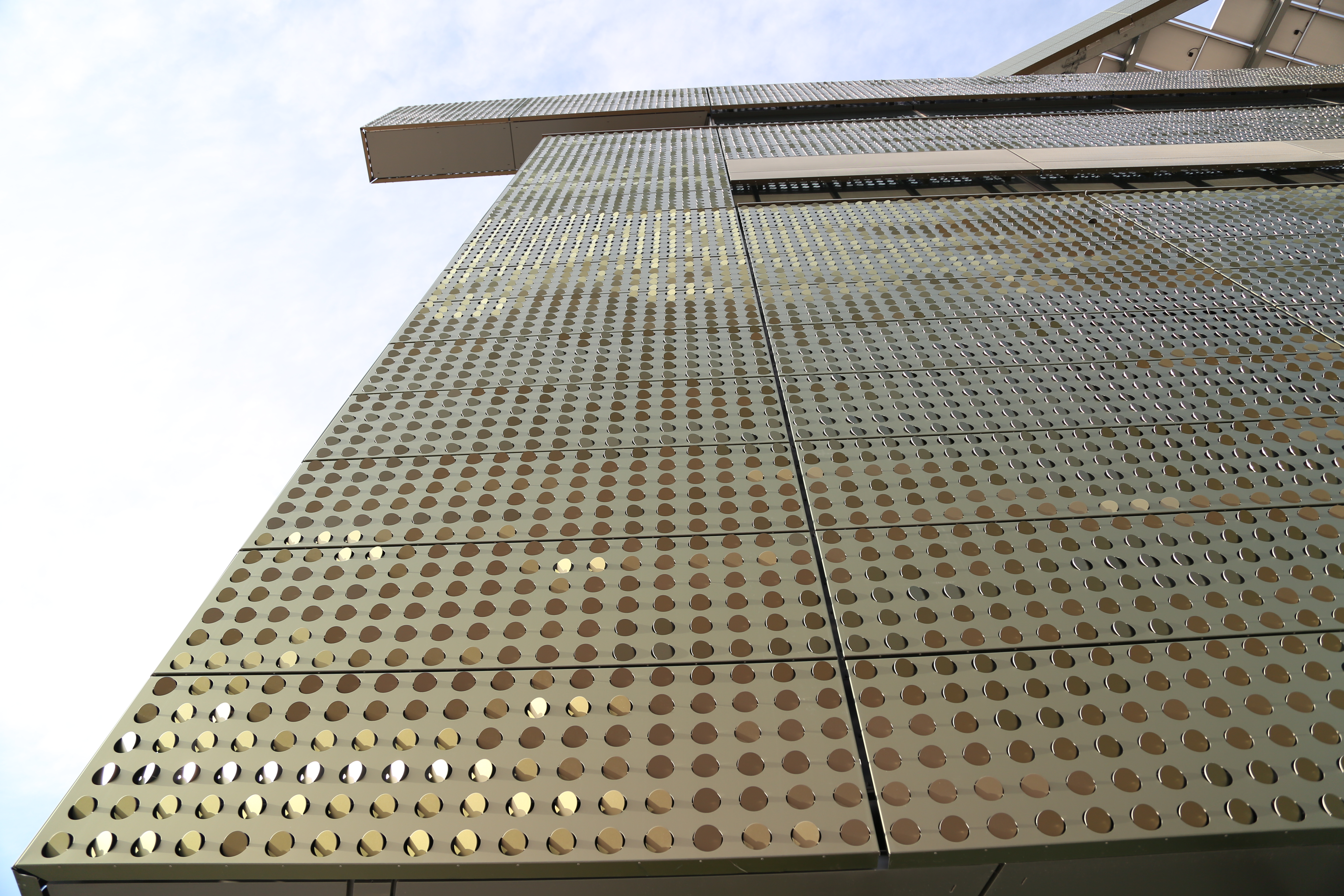
After determining the image statistics, the architects at Morphosis used this data to determine the tilt of the disks so they would catch the sunlight in interesting ways. This is why the building can appear to be a different color based on the time of day and the season.
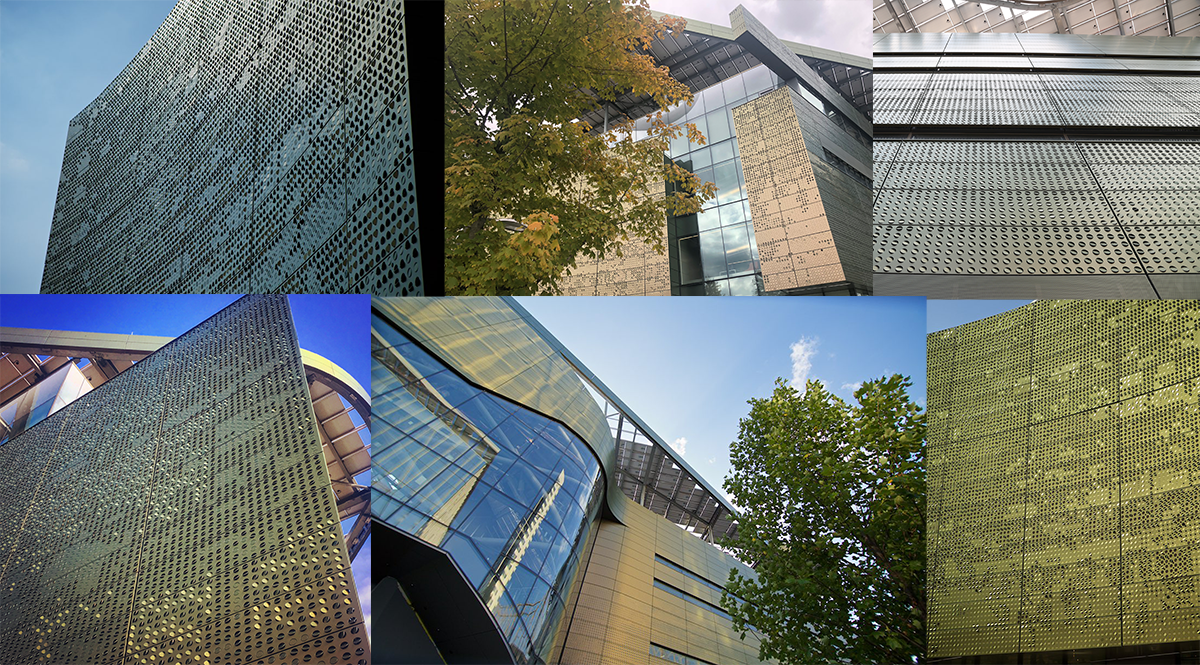
Learn more about the Bloomberg Center.
Media Highlights
Tech Policy Press
Content Moderation, Encryption, and the LawRELATED STORIES



